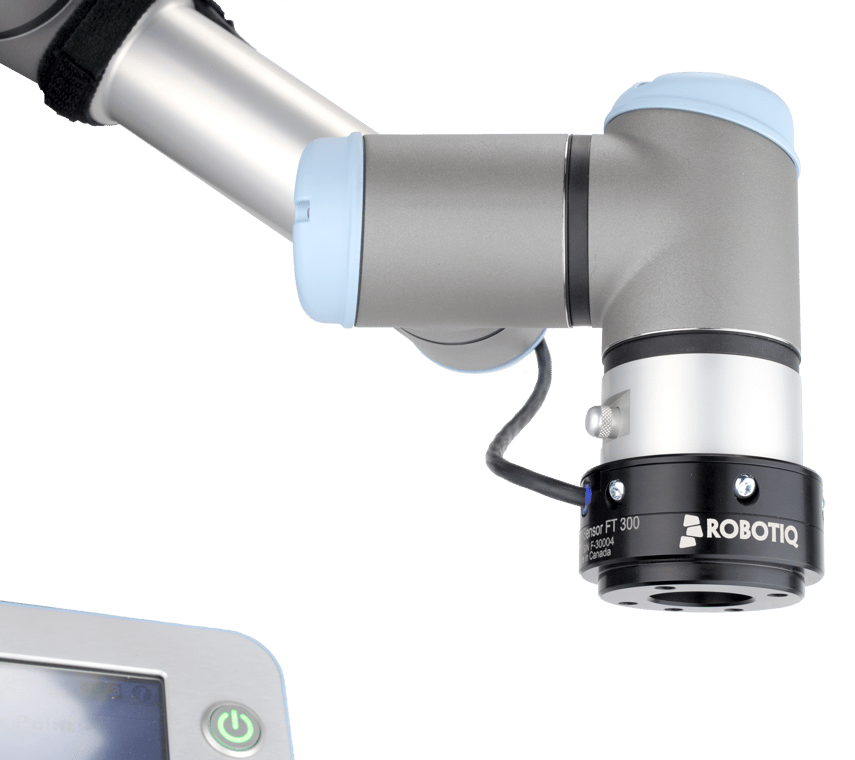Robotiq Releases its New Force Torque Sensor, the FT 300

Posted on Jan 19, 2016 in Robot Sensors
3 min read time
Robotiq launches its newest Force Torque Sensor: the FT 300, bringing a sense of touch to your robot. With plug and play integration on all Universal Robots, the Force Torque Sensor FT 300 makes automation of high precision tasks such as product testing, assembly and precise part insertion easy and fast to setup.

Our new Force Torque Sensor FT 300 is specially designed for Universal Robots. The easy integration includes a smooth mechanical fit, integration and programming. This new Sensor will open up a whole range of force sensitive applications that will be fast and easy to automate.
This new product helps meet Robotiq’s vision of using automation as a solution to the array of challenges that many manufacturers are facing on a daily basis.
“We strongly value our customers’ opinions and knowledge; and we want to use this to provide positive solutions for the successful automation of their project. We strive to make our products user-friendly and fast to integrate in any kind of industrial application, so that our customers can concentrate on their business.” explains Samuel Bouchard, CEO of Robotiq.
This new product is now officially available through Robotiq’s global partners. These high-tech distributors can quickly integrate and train local customers to program the Force Torque Sensor on Universal Robots using the plug and play kit provided by Robotiq.
Speed up your application development
In order to make the automation of complex tasks as easy as possible, the FT 300 comes with all the necessary mechanical parts, including easily attachable USB wiring, as well as software templates to operate the Sensor. Also, because it is digital, it doesn’t require an external signal processing box. This means customers will hit the ground running and save on downtime.
In terms of mechanical fit, the Sensor has an embedded coupling to fit directly on the UR wrist. The tool side of the Sensor matches the UR bolt pattern. In other words, you do not need to buy anything else if you are already using a tool/gripper on your UR robot.

Compact Design
When installing a force torque sensor on a robot you want it to be as small as possible. Having the smallest footprint with the least amount of cable possible to make the robot safe and easy to use will reduce potential impact all the while providing increased functionality to your robot and its application. Well, this Sensor answers all of these requirements, in fact, with its small footprint (approximately the size of the robot wrist) and with a reasonable height, the sensor creates the impression of a continuous robot arm.
You should also notice that even if the Sensor is slightly smaller than its older brother, its maximum force and torque is doubled. In fact with a max +/-300N and +/-30N.m in each axis the Sensor can accept a wider range of force.
What is going on with the FT-150?
We will still produce the FT-150, since its design matches certain applications and we will still offer the Universal Robots kit with the 2-Finger and 3-Finger Grippers for a limited time. But, if you are using a Universal Robots, and looking to add this functionality to your robot, I highly recommend that you use the FT 300, since it has embedded features that will match the UR robot better.








Leave a comment